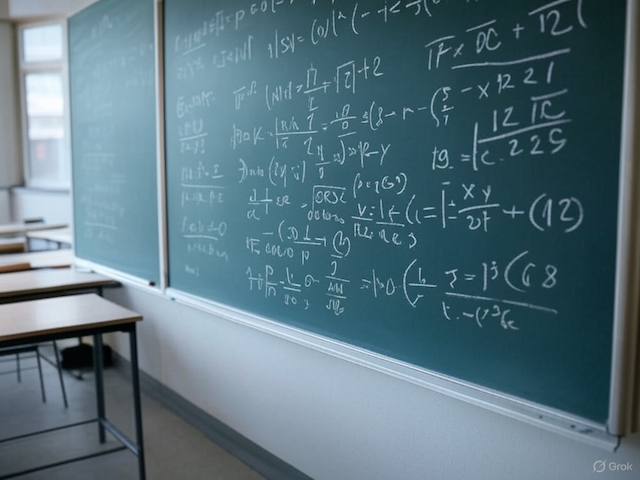Miscellaneous 🧮
- tags
- #Probability #Secret Sharing #Error Propagation #Commitments
- categories
- Introduction Miscellaneous
- reading time
- 5 minutes
Question 1
Consider the following:
- You have a random variable $X$, which is just a number (or a set of numbers) that is randomly chosen. In this case, $X$ is a string of n bits (where each bit is either 0 or 1), and each bit is chosen completely at random.
- You also have another random variable $Y$, which is also an n-bit string. However, $Y$ doesn’t have to be random in the same way as $X$—it can follow any pattern. But $X$ and $Y$ are independent, meaning knowing $Y$ doesn’t tell us anything about $X$.
- Now, we define a new random variable $Z$ by taking $X$ and $Y$ and combining them using something called the ”bitwise XOR operation” (written as $\oplus$). XOR works like this for each bit: – If the two bits are the same (both 0 or both 1), the result is 0. – If the two bits are different (one is 0 and the other is 1), the result is 1.
So, assuming we define $Z = X \oplus Y$, we apply this rule to each bit in the string separately.
The question is: What is the probability that every bit in $Z$ is $0$? (In other words, what is the chance that $Z$ equals $0^n$ ?)
Question 2
Imagine you want to send a long message to your friend. To keep it safe, you lock the message using a special method that protects it from being easily read by others. This method organizes the message into 100 small parts and then locks them one by one in a way that each locked part depends on the one before it. Now, you have sent the locked message to your friend over the internet. However, something goes wrong during transmission—one of the middle parts (the 50th part) gets damaged or changed because of a network issue. When your friend gets the message and unlocks it, how many parts of the original message will be affected by this error?
Question 3
Consider the following functions as $n \rightarrow \infty$: $$ 2^{-\sqrt{n}},~ n^{-\log n},~ e^{-n},~ n^{-2},~ 2^{-n}$$ Which of the following functions approaches to zero more quickly? Arrange the functions in order, from the fastest to the slowest.
Question 4
Suppose you and your friend live in Morocco with 50 different regions. You are currently in region $a \in \{1, \dots ,50\}$ and your friend is in region $b \in \{1, \dots ,50\}$. You can both communicate with one another. However, you want to test if you are currently in the same region as your friend. If you are both in the same region, you should learn that fact, and otherwise, you should learn nothing else about your friend’s location. Your friend should also learn nothing about your location. You both agree on the following scheme:
You both agree on the following scheme:
- Choose a common number $g$ that is fixed for both of you.
- You choose two random number $x$ and $y$ for yourself then send the following to your friend: $$(A0, A1, A2) = (g^x, g^y, g^{xy+a}).$$
- Your friend chooses two random numbers r and s and sends back to you the following: $$(B1, B2) = (A_1^r g^s, \left(\frac{A_2}{g^b}\right)^r A_0^s).$$
What should you do to test if you and your friend are in the same region (i.e., to test if $a = b$)?
Question 5
“Bitwise XOR operation” (written as $\oplus$). XOR works as follows:
- If the two bits are the same (both 0 or both 1), the result is 0.
- If the two bits are different (one is 0 and the other is 1), the result is 1.
A bank wishes to split the key $k$ of a vault into two pieces $p_1$ and $p_2$ so that both are needed when unlocking the vault. The piece $p_1$ can be given to one manager and $p_2$ to another so that both managers must be present to unlock the vault. The bank tries a mathematical approach by generating random $k_1$ and sets $k_1’ \leftarrow k \oplus k_1$. Note that $k_1 ⊕ k_1′ = k$. The bank can then give $k_1$ to one manager and $k_1′$ to another manager. by doing the above, note that both managers must be present to unlock the vault since, by itself, each piece contains no information about the original key $k$.
Now, suppose the bank wants to split $k$ into three pieces $p_1$, $p_2$, $p_3$ so that any two of the pieces are able to unlock the vault using $k$. This approach is to ensure that even if one manager is out sick, the vault can still be unlocked by the other two managers. To do so, the bank generates two random pairs $(k_1, k_1′)$ and $(k_2, k_2′)$ as in the previous paragraph so that $k_1 \oplus k_1′ = k$ and $k_2 \oplus k_2′ = k$.
How should the bank assign pieces ($p_1$, $p_2$, $p_3$) so that any two pieces can unlock the vault, but no single piece should unlock the vault?
Question 6
A hash function is a function $H: M \rightarrow T$ that takes an input from a large set $M$ and maps it to a smaller set $T$, typically in a way that appears random. Because $|M| ≫ |T|$, multiple inputs can have the same output, which leads to collisions (i.e., distinct $x, y \in M$ such that $H(x) = H(y)$). It is known that finding such a collision requires approximately $\mathcal{O}(|T|^{1/2}$) random samples.
- How many random samples are needed to find a three-way collision, i.e., distinct $x, y, z \in M$ such that $H(x) = H(y) = H(z)$?
